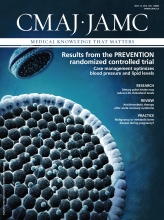Article Figures & Tables
Tables
Characteristic Nonrapid eye movement parasomnia Rapid eye movement parasomnia Confusional arousal Sleepwalking Sleep terrors Sleep-related eating disorder REM sleep behaviour disorder Sleep paralysis Nightmare disorder Emerges from Stages II, III and IV* Stages III and IV Stages III and IV Stages II, III and IV REM sleep REM sleep REM sleep Time of night Anytime during sleep First third of sleep First third of sleep Anytime during sleep Anytime but most frequently last third of sleep Anytime Anytime but most frequently last third of sleep Vocalizations Yes Yes Marked (screaming or crying) Yes Marked Slight (moaning or groaning) Sometimes Getting out of bed Rare Usual Sometimes Always (food seeking) Yes No No Responsiveness on awakening Decreased Decreased Decreased Decreased Responsive Responsive Responsive Autonomic activity Normal Normal Increased Normal No No Yes Post-event confusion Yes Yes Yes Yes No No No Prevalence 4.2% (10) 1%–4% in adults, 80% of adults have sleep walked as children (10) 1%–2% in adults (10) Unknown; estimated to be 1%–5% in general population but higher among patients with eating disorders; 2–4 times more common among women (4) Unknown; estimated to be 0.38% in the general population and 0.5% among elderly people;
about 33% of patients with newly diagnosed Parkinson Disease (1); more common among menUnknown. 15%–40% has been reported among students under 30 years for at least one episode (1) and 1%–10% of the population for multiple episodes (4) 5%–8% of adults; (4) more common among women Amnesia of event Yes Yes Yes Variable No No No Injury risk Low if undisturbed Low if undisturbed; may strike out if disturbed or intoxicated More common; may injure self trying to escape; may strike out if disturbed or intoxicated Self-injury from food preparation (cuts, burns, poisoning) May injure self or partner as part of dream enactment None None Family history of parasomnias Yes Yes Yes Yes Occasionally Yes Yes; twin studies suggest a genetic predisposition and co-occurrence with other parasomnias (1) Note: REM = rapid eye movement.
↵* The scoring of sleep has changed recently with Stage II sleep being renamed N2, and stages III and IV being named N3. Because most clinicians are familiar with the old staging nomenclature, this is what we have used in this review. (7)











